Teachers biographies and class descriptions of the contactfestival 2015!
LEVELS:
The classes are not divided into levels. In case the teacher found it necessary to ask for certain abilities you will find it inside their class description.
Please read the descriptions and respect your own limits.
In the registration process you will choose your intensive. Just make your decision depending on the themes of the intensives. The classes you can choose spontaneously at the Festival.
On the first day the focus will be on Contact Improvisation principles.
| Intensives |
Classes |
|
|
|
|
| |
Friday |
Saturday |
Monday |
Tuesday |
|
| Martin Keogh |
Niklas Valenti |
Noam Carmeli |
Enikö Szilagyi |
Rajendra Serber |
|
| Ruslan Baranov |
Ady Elzam |
Steve Homsher |
Laura Hicks |
Mathilde Monfreux |
|
Eszter Gál &
Peter Pleyer |
Inna Falkova |
Diana Bonilla Lafuente |
|
|
|
| Gretchen Spiro |
Heike Kuhlmann |
Vera de Propris |
|
|
|
| Didier Silhol |
Laura Barcelo |
Panu Erästö |
|
|
|
| |
Rachel Dean |
|
|
|
|
|
| |
|
last update 13th of February 15 |
|
| INTENSIVES |
| Martin Keogh |
USA |
|
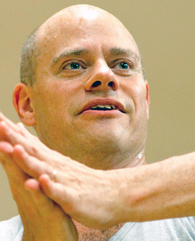 |
Martin has taught and performed contact improvisation for 35 years. For his contribution to the development of the form he is a Fulbright Senior Specialist and listed in Who's Who in the World. Martin spent time in monasteries in Asia and was the director of the Empty Gate Zen Center before discovering the world of dance. He founded The Dancing Ground, an organization that introduces contact improvisation at conferences focusing on gender, race and mythology. He has co-facilitated C.I. teacher's conferences on five continents. www.martinkeogh.com
Martin is the author of:
• The Art of Waiting: Essays on Contact Improvisation
• As Much Time as it Takes
• Hope Beneath Our Feet: Restoring Our Place in the Natural World
“My greatest sense of accomplishment comes from seeing students increase their capacity for sensation and risk—seeing them dance less with their “ideal” and more with their partner—and the profound gratification of introducing contact improvisation to those who then realize they have found the dance form they were seeking all their lives. I attempt to teach and model that the beauty and reach of our questions, in the end, determine the beauty and reach of our lives.” |
|
| NOWHERE BOUND |
|
Contact improvisation requires a courageous willingness -- but never so much as when we dance in the absence of will - those moments when we drop the reigns and, nowhere bound, allow our animal to carry us.
We can imagine contact improvisation this way: It is a frame of learned skills … but the place we meet our partner to dance is in the empty middle. During Nowhere Bound we will develop more skills to add to our “frame” and build more capacity for meeting our dance partners in the ‘Empty Middle.’
We will explore:
• Moving from a base of sensation
• Dancing with a shared central axis
• Seeking ease in going off balance
• Finding the spontaneous acrobatics of the form
• Spending more time in nuance, disorientation, and extended follow-through
We will settle into a base camp of mindfulness, and then set out to investigate the wilderness of disorientation. We will enter the forest where there's no trail, jump into the dark, swim into what might be a cave, and build a tolerance for waiting in the unknown.
For those with a solid grasp of contact fundamentals including dancing into the backspace and using hands as landing gear. |
|
| Ruslan Baranov |
Ukraine |
|
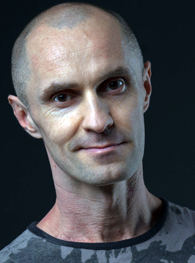 |
After years of training and performance as a classical and contemporary dancer, Ruslan got, inspired by a CI performance with Andrew Harwood & Frey Faust in Vienna, in 1999. He studied CI with Benno Voorham, Eszter Gal, Brenton Cheng and Eckhard Müller. Ruslan has found something that he can do best in his life. In a continuous learning process, he has been traveling and teaching in Ukraine, Russia, Moldova, Belarus, Latvia and Lithuania – making a great contribution to the development of CI in Eastern Europe and Russia. He has also organized a large number of workshops for European teachers and Festivals like: "?ontact session in Meganom", Kiev CI festival, Winter CI festival in Carpathians, Dance improvisations festival “PushOK”. Besides the organizational work and teaching, he creates theatre performances based on CI. The most successful are: “BW”, “Marriage in Dofinovka”, “Ballet CI”, “o CI – doc.i”, “ImprovIsation without I”. His dance and teaching style stand out by its physicality, clear and joyful approach and easy attitude to everything what is going on. |
|
WE WILL MEET & SEE WHAT WE GET
|
|
| Inventing the topic of my classes has always been not an easy task for me. In the 15 years of teaching CI I’ve never prepared my classes in advance. For me this is part of my Improvisation practice. Usually there is a subject of research, which gives me the inspiration to the moment. This is the freedom I take inside the limits and the freedom I get from the limitations. What happens to us and how do we behave when we don’t know what to do? Any principle or idea helps us, becoming a guiding light in our improvisation as we have some simple tasks, which we follow, and as our bodies find solutions to fulfill the task themselves. I ask myself, what is freedom? What does it give us? What do we need it for? And how can we use it? It is said that true freedom is defined by the ability to make decision at the last moment. That’s why I would like to reserve the right to decide, what we are going to do at class as we meet at the festival. |
| Co-teaching - Eszter Gál & Peter Pleyer
|
 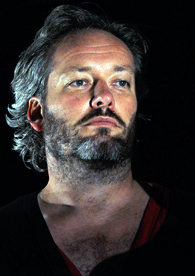 |
Eszter Gál HU |
|
| is a dancer, teacher, performer, currently teaches at the University of Theater and Film Arts in Budapest, co-directs the program of the Kontakt Budapest Studio and has been organizing the annual International Improvisation Festival in Budapest since 2002 (www.kontaktbudapest.hu). She is a certified Skinner Releasing Technique teacher at the Introductory and On going level, teaches SRT and Improvisation, including Contact Improvisation for almost 20 years. Since 1998 she has regularly been teaching and participating in International performance projects and festivals in Europe, Russia and in the US. She is a member of the mixed ability Company, called Tánceánia in Budapest, co-leading the work, creating and organizing performances. She has been part of EU funded International projects on documenting Contemporary Dance Education (IDOCDE / LEAP www.idocde.net), creating and developing a website for exchanging, discussing and archiving the Contemporary dance work. The core of her interest is somatic-based movement research (PhD studies), improvisation performance and community work for dance education. |
| Peter Pleyer GER |
| studied dance at the “European Dance Development Centre” in Arnhem. He worked as dancer and choreographic assistant with Yoshiko Chuma, New York and Mark Tompkins, Paris. Since his studies a long time collaborator with Eszter Gal/Budapest: choreography and improvisation (performances at the New York Impro Festival, Paris celebration of 20 years CI). in Holland Peter choreographed his own dances (a.o. paticipant at the choreography competition Groningen). In 2000 Peter moved to Berlin. With a big interest in the theoretical studies of dance and dance making, he developed “choreographing books” a lecture/installation, with his view on the development of dance studies in the US and Europe. He helped to create a dance education for contemporary choreography in Berlin and is teaching in different European festivals and institutions. From 2007-14 peter was the artistic director of Tanztage Berlin. 2013/14 he was a guest performer in the work of Keith Hennessy and Antonija lLvingstone and with his solo “ponderosa triligy”, the group show and international improvisation format “visible undercurrent” he picked up his own choreographic work in 2014. |
|
|
| “THE BODY” OF CI |
|
Co-teach by Eszter & Peter. The workshop offers a technical training through Contact Improvisation, releasing work, the investigation of the solo body and the exploration of the dance in duet and group forms. We will start with connecting to the earth, to ourselves and to our partners. The awareness of the weight of the body and its parts in relation to anatomical possibilities and its potential for movement will be the center of our investigation. Technical guidance will be also given through the practice of releasing work, specifically drawn from the Skinner Releasing Technique, where the tuning into the whole self, image and partner works providing and supporting safety and readiness. Exploring the transition from releasing into a full body dancing within a second or less might lead us to energetic or even rough dancing. The improvisational aspect of CI in conjunction with physical conditions such as gravity and centrifugal force and the knowledge of the human skeletons’ anatomy can expand the range of motion and creation. Mindfulness plays a big role alongside the commitment to a co-dependence on one or more partners.
The workshop is open for all with basic knowledge of CI or other movement techniques. |
|
|
| Gretchen Spiro |
USA |
|
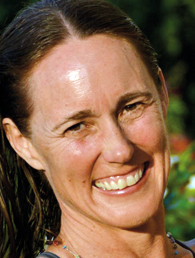 |
discovered Contact Improvisation in 1983, in classes with Nita Little. That work showed her that being vulnerable and present in movement pretty much changes your life forever. She studied with Nita for many years as a student and assistant. After receiving a BFA from Cal Arts in 1986, she taught Iyengar yoga and dance at Oregon State University and danced with Touch Monkey. Interest in the inner world of the emotional body led to a Masters Degree in Dance Therapy from Naropa University in 2000. She continues to be fascinated with how kindness, intuition, and insight can be cultivated through movement, awareness and art making.
Teachers who have greatly deepened her understanding of CI are Martin Keogh, Keith Hennessy, Joerg Hassmann, and Chris Aiken. Gretchen was an organizer of CI36, and is primary organizer of the Moab Jam, a CI event in the scenic Utah desert. She has taught at the West Coast CI Festival, Earthdance, SFADI, Aerial Dance Festival, and others. She founded Tumblebones CI Collective in 2002.
Along with dancing, Gretchen is a Gytotonic trainer, yoga teacher, and somatic psychotherapist. She lives in the Rocky Mountains outside Boulder, Colorado, USA. |
|
FREEDOM FROM THE FEAR OF IMPERFECTION
|
|
Like treasured secrets, the principles of CI expand the possibilities of playing with gravity. We can create flow, momentum, leverage, suspension and deep physical connection. This intensive will develop skills of aligning body and mind for liquid freedom in flight, support, and transitions. We will practice pouring weight, finding luxurious stretches, and extending into spirals. Intrinsic strength arises from efficient alignment. We will rise and fall like cascades of water, and find the seemingly magical possibilities that arise when we rely on the point of contact to lead the dance.
From this base of CI technique we will work with states of mind and ways to align our focus and feelings. What happens when we stop resisting the problematic, complicated, risky, wobbly, and awkward movements and emotions? Can these puzzles dance with us? We will relinquish ambition. We will be stuck sometimes, and free sometimes, and experience elation, boredom, pleasure, and confusion. We will see how the range of our human-ness can inform and enliven our dance. I am interested in being in a room with people in the practice of freeing themselves from the fears of imperfection. How does our honest presence pour itself through our body? |
|
|
| Didier Silhol |
F |
|
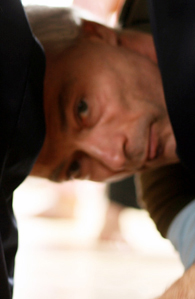 |
Sprint was the pathway that led me to wait and to reach the decision of dancing. That was long to take, but I’ve always kept this sensation that I came to it running, more precisely as a limping hare staring at the time running by and, all of a sudden, leaving. I don’t know if it's a (fatal) destiny or an (utopian) destiny, anyway, the way is inhabited by drawing, painting, music, cinema (all of it experimentally).
After studying cinema at University Pairs VIII, Didier Silhol began dancing in 1973 with artists and teachers of various cultural backgrounds. In 1978, he met Lisa Nelson and Steve Paxton, and began practicing Contact Improvisation.
Since then, CI has nourished his questions about dance, and thus his dancing, choreographing and teaching.
In his choreographies he works with professional dancers, musicians, and visual artists, as well as with non-professional dancers and people with disabilities. He is also an experimental film director and curator. |
|
| STATES OF SECRETS |
|
| CI is precious and strange in that we share with each other a dance that unfolds us without disclosing us. That is the secret: it doesn’t unveil itself, while it reveals us whether or not we know what moves us. It expresses us, more than we do it, and allows us to be naked in our clothes. We are not hiding anything by having secrets. The secret can remain a secret, even if it is manifested in the dance. It is, therefore, not so much about finding out what motivates the other, his wishes, his impulses or his secret, it’s rather to give consistency to something that is in all of us (but that can come from the outside), and showing it while accepting its heterogeneity in dance, its weirdness in the flow of contact. And at the end, to get rid of it in order to get close to this state of non-knowledge and availability, to the unknown, in the improvisation. It is also a game, a challenge that we share without dissimulation. Playing with having a secret in the dance will be one of our tools, elaborating a secret in relation to ourselves, to others, to the environment, choosing secret partners and patterns. |
|
| |
|
|
| CLASSES |
|
| FRIDAY |
| Niklas Valenti |
S |
|
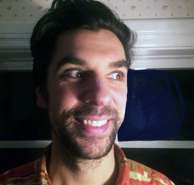 |
I have been dancing CI since 2002 and have been teaching it since 2006 in festivals and workshops all around Scandinavia and in Lithuania, Poland, Austria, Serbia, Romania and Hungary. I'm part of the group organizing the jams and CI-teaching in Stockholm. As a dancer and choreographer I have toured extensively around Sweden and Europe. I teach contemporary technique to professionals and students at Dance and Circus University in Stockholm. My formation is based on Hip-hop, Breakdance and Capoeira. Through a year of Grotowski based physical theater I came across CI which subsequently led me into contemporary dance and performance work. Since 2005 I've studied Alexander Technique and the Feldenkrais method. They both have had a big influence on my dancing and my teaching. |
|
| Leading and following |
Principles |
| It's a class about becoming more aware of yourself taking decisions of leading and following in your dancing. It could also be put as suggesting and answering, as actions that happen instantly when we interact socially, as well as in dancing. In this class, we will slow down these processes, and take a look at the components piece by piece, divide up in roles, exercising details and hopefully in the end placing them together with more freedom and awareness as result. We will dance, take pauses to reflect, and have as much fun as possible while learning. The physical contact will mostly be done through hands, and it will always be possible to engage in the proposed exercises from a place where you feel comfortable. |
| Ady Elzam |
ISR |
|
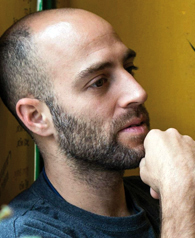 |
is an artist, dancer, improviser, teacher, explorer and student of movement. He started dancing at age 10 in the Israeli folklore dance school "The Iris of Nazareth". Ady trained at the modern dance academy in Haifa and continued to dance in Vertigo Dance Company and DeDe Dance. He has worked with different choreographers and has deepened his technical background in intense years of improvisation and performances. He is an artist that is seeking to change, himself through the world and the world through himself, bringing non-duality into existence. "My inner quest of the self, lead me to explore the now, in the now I find myself exposed and free…" |
|
| Softness as a base |
Principles |
| It is an effortless ride on the movement that already exists around us. When we listen deeply to the body, we can feel much of the movement that is naturally there. After we tune ourselves to clearly feel the inner movement, we can sense where the pattern of using effort comes up and we can let it go, revealing possibilities of movement that previously were unknown to us. The class will start with a clear tuning in, leaving behind everything that is not the present state of the body. By softly pealing the patterns and protections, we allow ourselves to be fully in the experience. Like a bird gliding on wind: softly, happily and effortlessly. |
| Inna Falkova |
Ukraine |
|
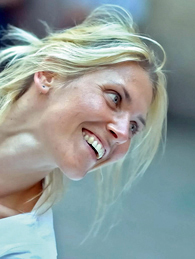 |
gives workshops of CI, performance and authentic movement in Ukraine. Besides she works at Kharkov University of Arts, where she teaches future actors dance and theatre improvisation techniques. Inna organizes theater and dance performances where she participates as well. She has done a dance-therapy education in Moscow and she uses some of these therapeutic practices in her teaching. "My personal research is simplicity, embodiment and expressing life experience in movement, dance as language, as an international language". |
|
| Body Languages |
Principles |
| We all come from different places, we all have our habits and our different languages. Yet we can communicate through the dance with all of our being, our bodies, and with all our qualities and our emotions, despite our differences and our peculiar features. To do this, we have at our disposal a wide repertoire as: technical physical movements, emotions and feelings, life stories, games and humor, philosophical discussions, poetry, and of course some styles of contact-dance, etc. What is the specificity of your body expression repertoire? In this class, we are going to look for communication through our own choices, our collective choices and with a particular partner. |
|
|
| top |
| Heike Kuhlmann |
GER |
|
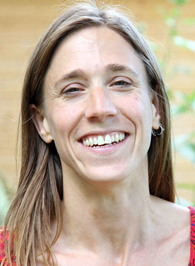 |
Heike lives in Berlin, where she works as a dancer, choreographer, teacher & body worker. She taught in different countries like Brazil, Spain, Romania, Switzerland and England. She graduated in Physical Education & Biology, holding an MA in Choreography as well as a Diploma in „Integrative Bodywork and Movement Therapy“(Dipl IBMT). Her approach to movement and dance is especially influenced by her study of Body-Mind Centering with Linda Hartley. She likes to use physical explorations in order to understand more about ones own body and to discover new sources of creativity. She likes to combine a playful approach with scientific curiosity. www.heikekuhlmann.net |
|
| The creativity of the 3 |
Principles |
| It is a relief to just focus on one other body while dancing, to sink into the duet and forget about the rest of the jam. Do you believe this? How does the dynamic of the dance changes in a trio? How does our focus shift from a duet to a trio? How can we stay dancing together as a trio developing it over a longer time without getting stuck or insecure and having to leave it? Deconstructing dualism, the thinking of the oppositions of mind and body, male- female, good – bad, this class is dedicated to the number three and the creativity we find in playing with focusing and playing with 3 in our own body, in space and in relation to one, two or more bodies. |
|
| Laura Barcelo |
RA |
|
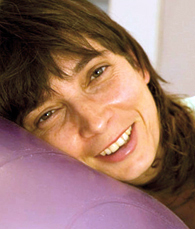 |
I’m dancer, teacher and performer. I met CI in 1989 and I teach, practice and research regularly for over 15 years. I’ve studied with Andrea Fernández, Nancy Stark Smith, Cathie Caraker, Alito Alessi (Danceability), Andrew Harwood, Martin Keogh, Ray Chung, Camilo Vacalebre, Daniela Schwartz, Eckhard Müller, Karen Nelson, Susan Schell, Dani Lepkoff, Lisa Nelson, among others. I investigate in expressive and therapy body techniques such as acting, clown, BMC, yoga, meditation, creaneo sacral therapy and in CDP, Autentic Movement. I'm interested in CI as a tool for healthy physical training, as a language for artistic expression and as a way of communication between people; a vehicle to be in the world. |
|
| Moving the center & the weight |
Principles |
| We will focus on the spine and the pelvis in the action of breathing, letting go and connecting to gravity; we will travel pathways from the floor to the vertical and vice versa through actions like: stretching, shifting, waving and flexing. We will explore the possibilities of one’s own body and the ways to facilitate the rising and the falling of its weight finding the support of the center/periphery connection. We will explore the boundary between holding and being sustained dancing the subtlety of the transitions, as we awaken our awareness and the self-responsibility for ones’ own weight. |
|
| Rachel Dean |
UK |
|
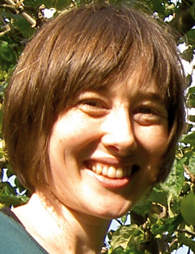 |
is a contemporary dance artist who performs, teaches and choreographs. She has danced Contact Improvisation for 14 years, is passionate about sharing her love of the form and regularly teaches dance undergraduates, open adult groups, adults with learning disabilities and professional dancers. She organises CI classes and jams with Improvisation Exchange Leeds. Her choreography (e.g. Nativity, Wolf, Love in Idleness) is strongly influenced by her improvisation practice and she performs regularly with improvisation collective Mathilde. She recently completed her MA thesis 'Entwining Solo Pathways through a Duet Form: A Practice-based Investigation of Contact Improvisation.' http://racheljanedean.wordpress.com |
|
| Small Dance, Big Fall |
Principles |
| Starting with the small falls of Steve Paxton's Small Dance we will work with a partner to amplify these falls, and through encouraging folding and spiraling, find ways of entering and leaving the floor with great ease and fluidity. We will try slowing down to allow time for this to happen, and speeding up so we depend on our bodies’ intuition and responses. By progressing with gentleness and awareness what was once not possible can become so, and with the possibility of falling comes the possibility of flying. An opportunity to practice and develop the key CI skills of listening and falling, ready to approach the week's dancing with ease and confidence. |
|
|
|
|
| SATURDAY |
| Noam Carmeli |
ISR |
|
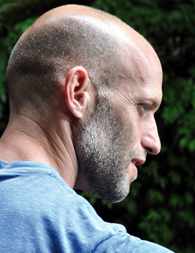 |
During my childhood I enjoyed to explore my physicality in the nature and in sports, but I never had the courage to dance. Finally, at the age of 30 I started, with a main focus on Improvisation and Contact improvisation, as well as Aikido and later on the Ilan Lev Method. After few years of working as an architect, I chose to fully devote myself to the path of movement. Along the years I continue to dive deeper in to the exploration of movement, body and dance, and I enjoy the benefits and inspiration it brings to my life. Today, alongside giving treatments, teaching and performing, I am managing the "Israeli C.I Association", co manager of the Ilan Lev Body Work Method and co manager at "TENA" Studio and The Body Research program. |
|
| FloWork & CI |
|
Through the practice of FloWork we will look for the combination of free movement supported by clear structure. While dancing, we will find efficient ways to use the skeleton in order to carry weight, together with letting go of muscular effort, which will help us to support the flow, and keep the body available, grounded and free. During our meeting we will explore how we can use these principles in the CI dance to support and enrich the duet. We will see how we can stay connected to our partner, enjoy the flow of movement and yet be honest to ourselves.
*FloWork is a solo movement practice based on principles from Aikido, Ilan Lev Method, and Contact Improvisation and inspired by Gaga |
| Steve Homsher |
USA |
|
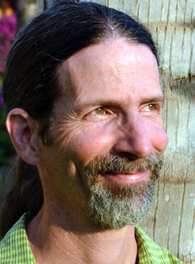 |
is a visual artist and dancer with a background in gymnastics, ballet, mime, social dance and martial arts (kendo). When he discovered CI in 1996 he was studying aerial dance and performing with Frequent Flyers Aerial Dance Co., with an emphasis on Skinner Release and low flying. He eventually became less interested in choreographed work and much more drawn to improvisation. CI engages him physically, mentally and emotionally like no other dance form. He has been influenced by Martin Keogh, Keith Hennessy, Ray Chung, Nancy Stark Smith and Chris Aiken. He has taught across the USA. He is a co-organizer of the Moab Jam, and is a facilitator of local jams. Since 2003 he has been a member of Tumblebones CI Collective, founded by his wife and teaching partner Gretchen Spiro. |
|
| Adventurous Curious Connection |
|
| Entering the realm of improvisation invites us to relinquish holding or setting. We infuse the core of our bodies and minds with curiosity, mystery, and the precarious in the present moment. Specific principles such as supple lines of integrity and asymmetrical weight distribution develop a pliable physical state as well as an adventurous connection to the ground. In this class we will work with a variety of strategies for mental states of awareness where we can be creatively autonomous while maintaining connection with our partner. The vast realm of our humanness is available material for our improvisational journey. We will endeavor to facilitate ease in traversing the spectrum of physical, emotional and creative possibilities by learning to understand and trust ourselves as we continually expand and grow. |
|
| Diana Bonilla Lafuente |
E |
|
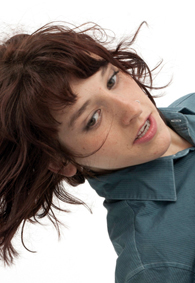 |
I entered the dance universe in 1996 by the classical door, along with Spanish traditional dance and flamenco studies in Madrid. Seduced by the creativity of our times and attracted by the floor, from '99 onwards I continue my formation in contemporary dance, CI, capoeira and different improvisation techniques. I lived one year in Berlin where I studied with a lot of dancers. Since 2002, I dance in different companies in Madrid specially, but also in Europe, Morocco, Israel, etc. I teach CI and organize Madrid CI Festival since 2006. As an improviser and performer, I'm involved in Omos Uno project, directed by Cristiane Boullosa, since it’s beginning in 2008. Nowadays I dance in Co. Mey-Ling Bisogno and, with Jonathan Martineau, I created my own Co. Coracor Danza. |
|
| Moving grounds, conscious winds |
|
| This class proposes to study the use of classical skills of Contact-Improvisation, such as rolling and sliding, specifically in the situation of flying while being supported by another dancer. We will unfold as much as we can the richness of giving weight. Starting from lower levels, we will work on understanding how specifically rolling and sliding are being modified when the full weight is offered to another body. We will slowly move upwards to discover new improvised paths, secured by an enhanced precision and clarity in our dancing. Our flying moments in our dances are too often squeezed by speed, fear and adrenaline. A greater understanding of our possibilities can make our flights everlasting and more enjoyable. On the other hand this same breadth of options can transform our bodies into wide, safe and playful grounds. |
|
|
| top |
| Vera de Propris |
I |
|
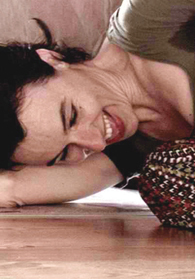 |
has a degree in Sociology from the University of Rome “La Sapienza” (2001)and a diploma in dance therapy from the “Laboratorio di Teatro Integrato” of Rome (2001). She has trained and graduated in contemporary dance at “L’OFFICINA” Centro Arte Danza, directed by Paola Rampone (2004).
She met CI in 2002 and continues practicing and researching CI and Instant Composition with several teachers like Patricia Kuypers, Kirstie Simson, Nancy Stark Smith, Andrew Harwood, Ray Chung, Martin Keogh, Simone Forti, Lisa Nelson, Julyen Hamilton, Vera Mantero, Simone Sandroni. Since 2005 she’s a member of RomaContact. Since 2005 she teaches CI on a regular basis, first in Rome and now in Sicily. Since 2006 she is teaching in Dance Educational Projects in several Primary Schools. |
|
| Dancing, watching, speaking |
|
| The aim of the class is to explore some fundamental principles of CI bringing together the focus of the watching and speaking in the dance. We will work individually and in pairs. We will allow our inner and our outer sense of space to dialogue, the intention/action of the movement to relate to the space in which it takes place. In speaking, stating words is a tool by which the dancer enters into relationship with their partner and with the wider space that surrounds us all. We’ll be free to dance, allowing the movement, the focus of the watching and speaking to come together in a creative, natural and fun way. |
|
| Panu Erästö |
FIN |
|
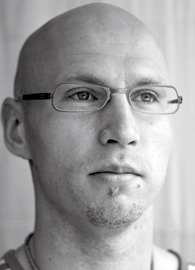 |
After many years of intensive dance practice (African dances, modern, contemporary…) found Contact improvisation in 2003 and fell in love immediately. Since then, he has been intensively practicing and studying CI mostly within the lovely Helsinki contact community where he has been an active participant e.g. by being one of the regular organizers of Skiing on Skin – the Finish Contact festival. Panu has been intensively practicing Pilates and capoeira for more than 10 years. During last years, he has involved again circus scene where he’s interest lies on aerial acrobatics and most recently on Cyr Wheel. During daytime he works as university lecturer and in the evenings as Pilates and movement teacher. He has an analytical approach to movement but respects also the non-analytical flow of movement and life as well. |
|
| Dancing with the waves |
|
| In this class we study and practice waves. The class includes solo and partner work to give light to both, individual movement experience and also how this movement pattern can be used in dance with partners. Within these contexts, we investigate different aspects of waves, such as fluidity, easiness, support, breathing and spacing, to name a few. The concept of extension is also incorporated within the context of waves to bring awareness to multiple directions and choices. The proposition of waves is built on CI basic principles but keeping doors open for own perceptions, ideas and investigations thus making the class suitable for all. Despite the investigation goal, the studying is made through dancing. |
|
|
|
|
| MONDAY |
| Enikö Szilagyi |
HU |
|
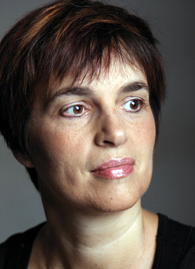 |
is a dancer, teacher and organizer. As a performer, she has participated in various research projects on improvisation and performance. She is founder of SferasLab (www.sferalab.org) and member of L1 Association. She has taught at different international festivals and workshops in Europe (Germany, Poland, Romania, Spain, Italy, Greece and in South America. Besides she teaches her own somatic-based improvisation system called ’Sfera Movement’. She sees her main interest in improvisation, somatic movement, consciousness and the transformation of perception. She is one of the organizers of L1danceFest in Budapest 2015 and ECITE 2016 (European CI Teachers Exchange) in Hungary. |
|
| Shared time - inner rhythms |
|
| The body is a meeting point of time layers. Inner time, which we are made of, and the time outside of us, in relation to which we exist – these two rhythms meet in our body. The perception of our inner rhythms makes our dance clearer, more determined and sophisticated. How can an inner rhythm be visualized in the movement? How do the inner and the outer meet in the body? What is my own rhythm like compared to other rhythms and qualities? What is the connection between the rhythm and the quality of movement? How can the experience of our inner time be connected to the rhythm of the outside? The presence of our body is a permanent and unconscious answer to this question. How can we maintain our observer presence with the extension of our perception and with an open harmonization with others, during improvisation? |
| Laura Hicks |
CAN/GER |
|
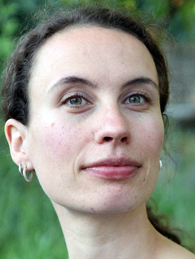 |
is a dancer, performance maker, and teacher. She commits to an artistic practice that questions awareness and perception, cultivates a curiosity about movement patterning and intention, and uses tools relating to image, state, and voice. Her work is inspired by a study, and love for improvisation and CI, Bartenieff Fundamentals, functional anatomy, physical theatre, and contemporary dance. Her teaching of contact is greatly influenced by Peter Bingham while she also draws from her experiences with Chris Aiken, Andrew Hardwood, Nina Martin and others. Laura is currently working on her MA in Contemporary Dance Education with the Hochschule für Musik und Darstellende Kunst in Frankfurt. |
|
| Container with Contents |
bodywork into dancing |
| Borrowing from the language of Bartenieff Fundamentals and BMC, we will consider the body as a form of container and contents. The container is a metaphor for the structural aspect of the body that both holds and carries an “inner world” or contents in a state of constant communication with the “outer world” or the space around us. Using these images we will move and explore sensation while being moved. Using rocking, shifting, observing, and manipulating to share in a physical curiosity about these ideas through touch, we will simultaneously be warming up sensation and proprioception. The class will progress through solo improvisation and scored duets, ending with time to dance. |
|
|
|
|
| TUESDAY |
| Rajendra Serber |
USA |
|
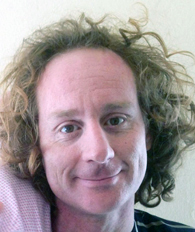 |
has had the privilege of collaborating with many wonderful artists including Sara Shelton Mann, Scott Wells and The Residents. He was born the same year as CI and grew up wrestling as a playful and loving practice. Starting with his father, who was a national wrestling champion in Argentina. Since that time he has studied a variety of physical and energetic forms, including CI, Release Technique, and Chi Gung. Some of his teachers have been Anna Halprin, Nita Little, Simone Forte, and Daniel Lepkoff. He has been teaching CI since 1999. For the past 3 year he as been one the organizers of the West Coast CI JAM (wcciJAM.org). As a director and performer his work has been presented at venues in SF, Seattle, LA, NYC, Berlin and Paris. See rjndr.net |
|
| Art-sport |
|
| In this class we will explore the balance between art and sport. Sharing momentum traveling through space into and out of lifts works when you have full commitment to a goal beyond the point of contact. We are going to get outer spatial striving to attain that goal. The artistry comes in the choice of which goal to strive for and how to communicate that with your partner. How can we find strength in ourselves and in our partners? How can we let changing states guide us in finding a balance between expression and athleticism? We will play between the gravitational pulls of the earth and our own changing states. This class is best suited to those already comfortable with lifting, being lifted and inversions. |
| Mathilde Monfreux |
F |
|
 |
is a French dancer, performer and CI teacher. After having been active in the Paris CI community, she is now living in Marseille, south of France, and developing contact there with an intimate group of people. She had her first full immersion in Contact Improvisation in San Francisco 15 years ago - she has then been influenced by many encounters within workshops in different countries, like with Lisa Nelson, Kirstie Simson, Brenton Cheng, Mark Tompkins, Didier Silhol, Jörg Hassmann- and a lot of other animals and unknown people! She picks up from the CI experience, energy and freedom of movement, which support her as a performer in diverse pieces. She nourishes as well her practice with the poetry of butoh, voice, and visual art. |
|
| Flexion - Extension in trio |
bodywork into dancing |
| Looking for an automatic response of the body as it is really extended or really compressed. Sensing a strong connection from the core/center to the limbs. Being the center of the trio. A large center, extended to the space by the action of two partners or a very concentrated center…until explosion. From a release and manipulated body to a very energetic one: a way to find momentum. Making the center of the trio turn and being shared. Opening this awareness of flexion and extension to the dance and to the space. |
|
|
|
|





















